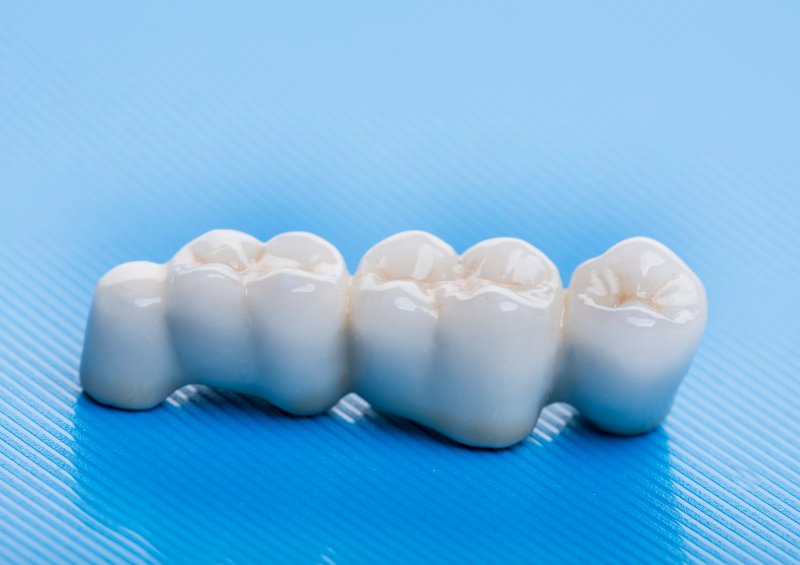
Bridges suspended between two points of geography can be wonders of technology and engineering, but they can collapse if they experience too much stress. Unfortunately, dental bridges that replace sequential teeth can fail just like London Bridge and Galloping Gertie, so it is necessary to periodically replace these restorations. Here’s a brief guide to how long dental bridges can last, what makes them fail, and how to keep them in great shape.
What Is a Dental Bridge and How Long Can It Last?
A dental bridge consists of one to four artificial teeth suspended between two dental implants surgically placed in the jawbone or two dental crowns placed on healthy teeth. These devices are designed to replace one or several teeth in a row with beautiful and lifelike restorations, but they are typically used to replace one, two, or three since longer appliances are more unstable. A bridge supported by crowns can last fifteen years or more if it receives excellent care, but a device supported by implants may last several decades.
What Causes Dental Bridges to Fail?
Dental bridges can fail for reasons like:
- Tooth decay: If the natural teeth supporting a bridge become infected, the bond holding them together can be compromised.
- Gum disease: If the bridge is supported by implants, advanced gum disease can cause the titanium posts to separate from the gums.
- Grinding: Untreated teeth grinding can wear down the artificial teeth of your bridge and work it loose from the teeth or implants supporting it.
- Injuries: A fall or a blow to the face can fracture a bridge or knock it loose.
- Acid exposure: Excessive consumption of acidic foods and beverages like hot sauce, citrus, vinegar, soda, juice, and alcoholic spirits can erode the cement holding your restoration in place.
- Stains: While the artificial teeth of bridges are stain-resistant, they can become discolored due to frequent exposure to richly colored foods and drinks like coffee, tea, red wine, berries, dark sauces, tomato products, and colorful candies. Since bridges are supposed to restore the appearance as well as the function of your smile, this can be reason enough to replace your appliance.
How Can I Keep My Bridge in Great Shape?
Luckily, you can keep your dental bridge in excellent shape with excellent care and maintenance. Keep the following guidelines in mind:
- Limit your consumption of acidic and sugary foods and beverages.
- Brush, floss, and use antibacterial mouthwash every day.
- Be sure to clean beneath your appliance daily. Many people do this with tools like floss threaders, water flossers, and sulcus brushes.
- Wear an athletic mouthguard when playing sports or riding a bike.
- Wear a nightguard to bed if you grind your teeth in your sleep. Your dentist can fit you with a customized appliance that provides superior protection.
- See your dentist regularly for routine exams and cleanings.
Smart habits will help you keep your bridge in excellent shape for as long as possible. If you’re interested in a longer-lasting restoration, your dentist can help determine if dental implants can be a great way to secure your bridge.
About the Author
Dr. Karen Littlefield Neil earned her dental degree at the University of Texas Health Science Center at San Antonio and established her Fort Worth dental office in 1993. She is a former president of the Fort Worth District Dental Society and a member of the Licensing Committee for the Texas Dental Association. Her office in Fort Worth offers general, restorative, cosmetic, and emergency dentistry as well as dental bridge services. To learn more about proper bridge care, contact her on the web or dial (817) 738-3368.
